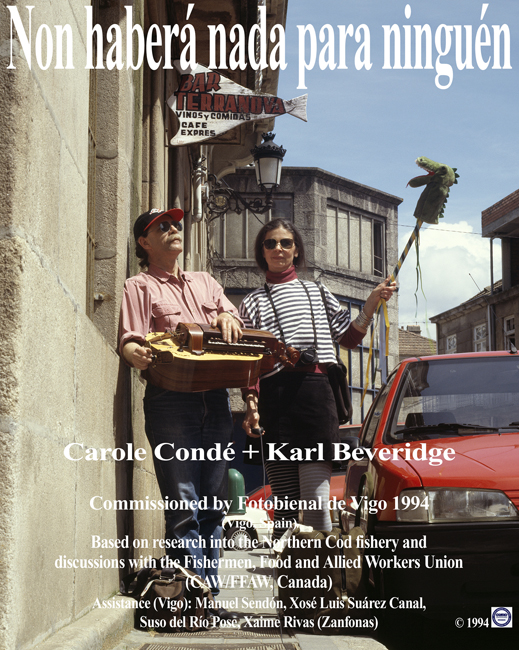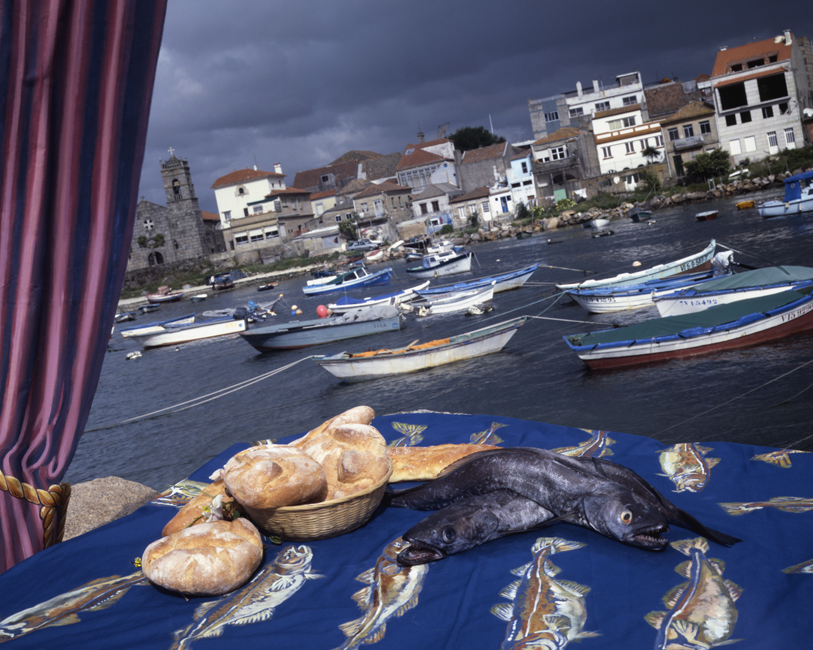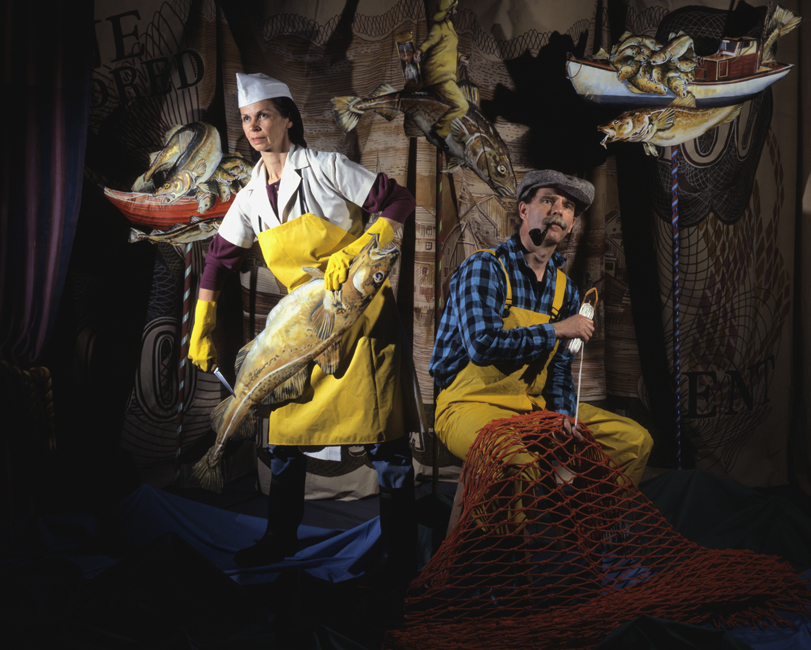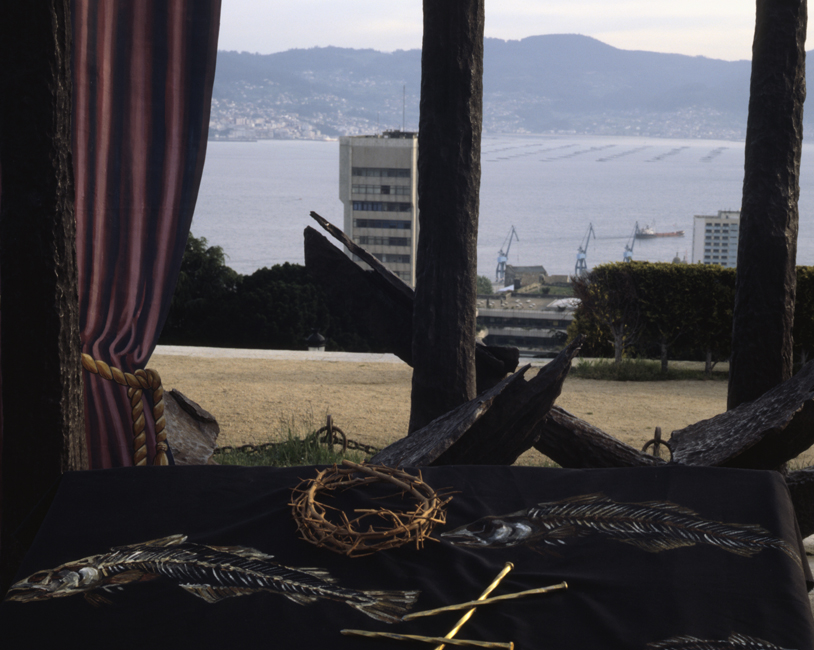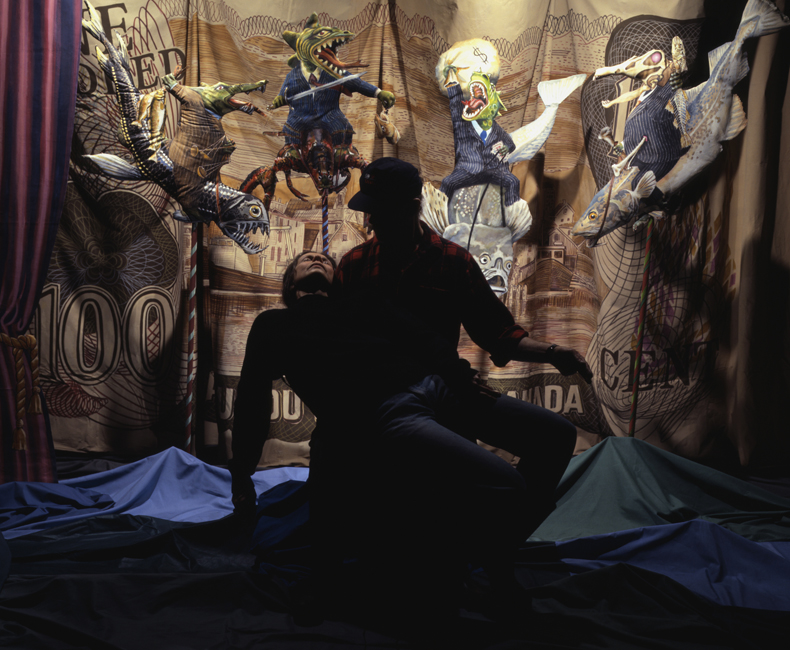Non Habera nada para ninguen
or There Will Be Nothing for Anyone (1994) When we were first invited to come to Vigo we hesitated in accepting the invitation. We were wary about photographing in a community we had no connection to or knowledge of. However, when we began inquiring about Vigo, a connection soon emerged. As a major Atlantic fishing port, fishermen from Vigo have fished off Canada’s Grand Banks for over two centuries, if not longer. And Vigo is implicated in the current controversy surrounding the decline of the cod fishery and Canada’s declaration of a cod fishing moratorium.
We talked to members of the Fish, Food and Allied Workers Union (FFAW/CAW) and did as much research as a month would allow. It quickly became apparent that the current conflicts around over fishing are not between fishermen from different countries, as the media often portrays the situation, but is due to the manipulations and mismanagement of governments and fish corporations over the past forty years. It is a scenario not dissimilar to the devastation of the worlds forests and other environmental resources.
The project we undertook in Vigo involved both studio and location production. The images tell the story of the decline of the cod fishery from a Canadian perspective. We begin the series by identifying ourselves as traveling photographers visiting the Bar Terra Nova in Vigo. We reference to religious imagery both because of its history in Galicia, notably Santiago de Compostela, and to its place in the cultural life of both Galicia and Newfoundland. The series ends on an optimistic note that the cod fishery could survive if fish workers and their communities were able to manage the stock on the basis of local need and mutual consensus.
Postscript: A final image was added to the work a year later and was shot in St. John’s harbour. It references to the ‘Turbot War’ which had just occurred and the impoundment of the Estai, a trawler from Vigo, for violating fishery regulations.

